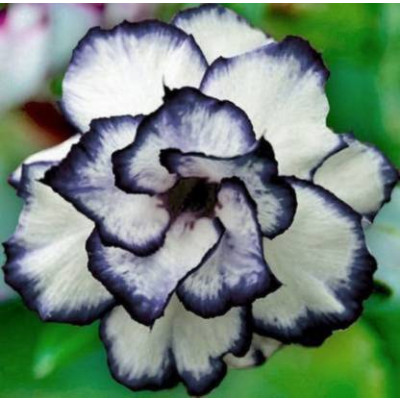The Blue Adenium plant is a stunning and rare flowering succulent that has captivated gardening enthusiasts worldwide. Known for its vibrant blooms and unique bonsai-like appearance, this plant has gained popularity among collectors. In this blog, we will uncover everything about the Blue Adenium plant, including its origin, care tips, propagation methods, and common misconceptions.
What is a Blue Adenium Plant?
The Blue Adenium plant is often marketed as a rare variant of the Adenium species, commonly known as the desert rose. However, it is important to note that true-blue flowers do not naturally occur in Adenium plants. The images of the Blue Adenium plant found online are often digitally enhanced or artificially dyed. Naturally, Adenium flowers range from pink, red, white, and yellow, but not blue. Despite this, many plant lovers still seek the Blue Adenium plant due to its aesthetic appeal and exotic reputation.

How to Grow a Blue Adenium Plant?
If you still wish to grow a Blue Adenium plant, you can follow the general care guidelines for Adeniums. While you may not get a true-blue flower, you will still enjoy a vibrant and hardy succulent.
1. Sunlight Requirements
The Blue Adenium plant thrives in bright sunlight. It requires at least 6 hours of direct sunlight daily to ensure healthy growth and abundant flowering. In regions with intense heat, partial shade in the afternoon is recommended.
2. Soil and Potting Mix
A well-draining soil mix is essential for the Blue Adenium plant. A cactus or succulent mix combined with sand and perlite will prevent root rot. Good aeration is key to maintaining a healthy root system.
3. Watering Needs
The Blue Adenium plant is drought-resistant and prefers a dry environment. Watering should be done once the soil is completely dry. Overwatering can cause root rot, which is the most common issue faced by Adenium growers. During winter, watering should be reduced significantly.
4. Fertilization
To encourage blooming, the Blue Adenium plant requires a balanced fertilizer. A phosphorus-rich fertilizer during the growing season will enhance flower production. Organic compost or liquid fertilizers can also be used.
Propagation of Blue Adenium Plant
The Blue Adenium plant can be propagated through seeds or cuttings.
Seeds:
Growing from seeds allows the plant to develop a thick, beautiful caudex (swollen trunk), a signature feature of Adeniums. However, it requires patience as the process is slow.
Cuttings:
This method provides faster results, but the caudex may not be as prominent as seed-grown plants. Cuttings should be dried for a day before planting in well-draining soil.
Common Misconceptions About the Blue Adenium Plant
1. Does a Blue Adenium Plant Really Exist?
The most significant misconception is that the Blue Adenium plant produces naturally blue flowers. In reality, genuine Adenium plants do not have a blue variety. If you come across a seller offering Blue Adenium plant seeds, they are likely misleading you.
2. Are Blue Adenium Plant Flowers Dyed?
Some nurseries may artificially dye the flowers to give them a blue tint. However, these effects are temporary and do not last in new blooms.
Conclusion
The Blue Adenium plant may not naturally exist, but Adeniums are still among the most beautiful flowering succulents. If you are drawn to the unique bonsai-like shape and stunning flowers, an Adenium plant is a great addition to your garden. While searching for a Blue Adenium plant, be cautious of misleading advertisements. Instead, embrace the natural beauty of authentic Adeniums, which come in a variety of striking colors.
Would you still consider growing a Blue Adenium plant, or are you more interested in its natural varieties?
Let us know in the comments
Have a look at our store to find one.
